Has anyone combined flying drone surveys with AI for counting wild herds?
14 April 2024 3:40pm
21 May 2024 4:21pm
Some good points. Why not use a plane and fit it with high def camera + infrared sensor (+ possibly Lidar). You can fly higher and cover a much larger area in the same time.
One thing which isn't addressed if just using a camera is that many animals are missed because they're under cover. For many species and in many areas aerial surveys are pretty unreliable, but people stuck with them as they're fast and produce results.
21 May 2024 6:06pm
The main reason for a hydrogen fuel cell conservation drone is that the flying cost would a lot cheaper than even a light sports aircraft.
It is really expensive and out of most reserves budget to have an aircraft. Costs don't only include fuel but money for: pilot, aircraft insurance, avgas fuel depot, transport of avgas to reserve fuel depot, hangar, regular aircraft regulatory maintenance and rebuilds, aircraft engineer call outs for necessary for even minor repairs.
A long-endurance hydrogen-fuel cell conservation drone that used green hydrogen generated via electrolysis of water using solar panels at a reserve would be much cheaper and logistically much easier. With a video feed to a control room reserve, anti-poaching and ranger managers could have live aerial situational reconnaissance pretty much the same as being in a R44 or a plane. The low flying time cost would make it feasible to check out areas where there is a poaching, fire, or deforestation alert, because it is easy and cheap to fly out and check what is happening. So a drone could be used daily for a lot of conservation management tasks as well as doing game counts, radar detection of snares and anti-poaching support.
Affordable Online Assignment Help for Students
21 May 2024 6:04pm
Who's attending the World Biodiversity Forum in Davos?
20 May 2024 9:50pm
Mounting Electret Microphone
20 May 2024 6:20pm
DeepDive: estimating global biodiversity patterns through time using deep learning
20 May 2024 4:51pm
These authors "develop an approach based on stochastic simulations of biodiversity and a deep learning model to infer richness at global or regional scales through time while incorporating spatial, temporal and taxonomic sampling variation."
Measurements for species vulnerability to overharvesting
20 May 2024 3:06pm
Mass Detection of Wildlife Snares Using Airborne Synthetic Radar
7 January 2024 6:50am
18 May 2024 2:42pm
I really hope you get this funding! You are so right about increasing the cost of poaching as a deterrent (snares destroyed, investment in snare cables and logistics all for nothing....) - hopefully you are going to want to trial this system in moist tropical rainforests next - hope you decide Kerinci Seblat, Sumatra an ideal candidate site! (Yes, I am very, very enthusiastic)
20 May 2024 8:05am
Yes, it is really important to distinguish "noise" from real snares.
Having rangers respond to false positives will really be detrimental to the whole project. Too many false positive resulting in them going out and not finding snare will in the long term mean that they will not respond to distant snare alerts, assuming that they might just be metal cans etc.
Classification of targets will be dependent on the interaction of the target with the 4 polarizations of the radio waves of the radar signal and the certainty of classification will be displayed eg. :
Target-Snare; Location: -31.71130, 24.56327; Classification Accuracy: 99%, Time Detected: 08:53
Target-Bicycle; Location: -31.71130, 24.56327; Classification Accuracy: 32%, Time Detected: 08:55
Target-Chainsaw; Location: -31.71130, 24.56327; Classification Accuracy: 40%, Time Detected: 08:53
Target-Aluminum can; Location: -31.71130, 24.56327; Classification Accuracy: 80%, Time Detected: 08:55
These detections will be sent as alerts to rangers, EarthRanger will monitor the response to them and what the rangers found and exactly where, together with an uploaded photograph of what was found. These will be fed into the detection and classification algorithms to result in a constant improvement of detection and classification under different circumstances
20 May 2024 8:11am
Thank you so much for your support. I am finding it really difficult to find the funding for the initial development. We need lots of engineering time to refine our detection and trial it in ever more complex habitats. We really need money for a well-qualified electronic engineer competent in signal processing to work on this full-time as my PhD student, has to hold down a full-time job as Radar lead for a satellite company.
Save Our Seas, small grant call (±$5K)
19 May 2024 8:05pm
Consultancy opportunity - Tech for the Blue Economy
19 May 2024 5:23pm
REDAA call for £1-1.5M projects
19 May 2024 5:03pm
Audiomoth Energy consuption estimates
4 March 2024 12:25pm
16 May 2024 9:34pm
We had this same issue, and found that the firmware version 1.9.2 was our issue. We bumped it back to 1.9.0 and our energy consumption was back to normal.
We record data for 7 hours a day (3.5 hour blocks), using sandisk extreme 64GB micro SD cards. We don’t use re-chargeable batteries, and the ARUs are set for 14-day periods before being collected. With the 1.9.2 firmware, for some reason they’d only record for maybe 9 days tops before dying. At firmware 1.9.0, we were back to our normal recording of minimum 14 days (although they often last longer). We tried different batteries, different energy saving settings, nothing worked besides bumping the firmware down. This issue was in both our brand new AudioMoths and 2-year old AudioMoths.
I hope this helps.
17 May 2024 11:42am
Very helpful! Thank you, I'll try that.
19 May 2024 11:27am
Hi Tabitha, What recording settings were you using when you saw these differences? I've measured the consumption across some different firmware versions and I can't see any difference. Were these AudioMoth 1.2.0 devices? Alex
Data loggers for sewage monitoring
7 May 2024 3:51pm
18 May 2024 2:55am
Hi Jamie,
Nitrate sensors for sewage are quite pricey, so I might go with a bunch of OpenCTD loggers, on the theory that the conductivity will spike in sewage. There may also be a detectable temperature signal.
Share Your Work in a Conservation Technology Video
17 May 2024 9:06pm
SCGIS Annual Conference: Conservation for Action
17 May 2024 7:30pm
Using Raster data?
23 April 2024 1:17pm
3 May 2024 4:14pm
Hi Sarah,
It depends on what question you're asking. It would make sense to upload the land cover rasters for each year and then your data (you didn't mention what form your data is in). Then, you could run an analysis to look at temporal change in the landcover or other types of analyses, depending on what you're trying to do.
Best,
Vance
17 May 2024 1:42pm
Depending what you want to do, there are free services to annotate values for each point, interpolating between available time-location records in the RS data.
The EnvDATA Track Annotation Service on Movebank (use the "generic time-location records" option).
NASA's AppEEARS point extraction tool.
Technology for Environmental Governance in Kenya
15 May 2024 8:36am
15 May 2024 10:55am
Hello @nyokabi great question! What I know of is the following, hope it's helpful:
- WildlifeDirect's “Eyes in the Courtroom” project, which monitors wildlife crime cases in court to inform and support improvements to environmental law and prosecution. Think it utilizes some sort of app software.
- MIKE
16 May 2024 9:03pm
Thank you very much for this Esther.
I also came across Trade in Wildlife Information Exchange (TWIX) which is a enforcement tool for international wildlife trade.
Insect cameras in The Inventory
1 May 2024 9:26pm
2 May 2024 2:02pm
Hey @JakeBurton , nice work with The Inventory!
This is very aligned with some internal efforts going on in our community to map out devices, but also data and models eventually. It would be great if we find a way to make this two interoperable. We are still in the (very) alpha development phases, so it is quite open, but it would be super helpful to have some insight about the under-the-hood data structure that The Inventory is relying on, so we can figure out good ways to reliably map or info onto them.
Happy to chat further or set up a meeting!
@qgeissmann👀
3 May 2024 2:13pm
Thanks very much @LucaPego! Just to clarify, 'Products' does cover hardware, but it also includes software and databases as well. Basically anything that you can take and use in your work. Sounds like we should also be including models in that as well!
It would be great to see more databases and software listed and reviewed on there. We would also be interested to learn more about your internal efforts in your community and what overlap there is for sure. Could we set up a meeting?
16 May 2024 3:16pm
Hey there @JakeBurton , sorry, I did not see your message!
Why don't you shoot me an email with some tentative availability to luca.pegoraro (at) wsl.ch, and we take it from there?
Again sorry for the delay!
Operation Ferdinand - a Predator and Livestock Conflict Prevention Video Game!
23 June 2017 7:12pm
15 May 2024 10:36am
Hey @FleuryGS :)
Bright Frog Game Studios is producing some really cool environmental education video games that more people should know about! I've gone ahead and added it as an organisation entry on the Inventory #Bright Frog Game Studios where you can edit and add more information, sharing more about the insightful games you've developed like Operation Ferdinand.
Welcome to WILDLABS!
29 October 2015 5:16pm
13 May 2024 12:13pm
I have been working at the Forest Science and Technology Centre of Catalonia for more than 15 years as a maintenance manager and, in recent years, taking advantage of my training in electronics, giving support in technological projects related to its Area of Biology and Biodiversity Conservation. In recent years we have worked on projects of bioacoustics, species tracking with RFID (BIRDLOG), microcameras in nest boxes of bats and birds, and autonomous recorders of human presence in protected caves (LOGCAVE), among others.
Glad to participate in this platform, so useful to share and find resources related to this field !
13 May 2024 5:52pm
@sebjwallace Glad you gave iNaturalist a go, and happy to hear you enjoyed it. Now tell all your friends!
14 May 2024 2:48pm
Hi everyone,
We’ve emerged into the genomic age and it is a powerful approach to back wildlife conservation. However, sometimes it can be tricky to become familiar with technologies and the software to analyse genomic data.
I would like to present SequenceServer. It is a fantastic tool that enables you to analyse genomic data. The interface is designed to make life easy, and you don’t need lots of computational experience. Many different analysis approaches are possible and will certainly be valuable to the world of conservation.
You can try it out for free! And if you have any questions, please feel free to message me. The SequenceServer team is happy to discuss your research needs and offer support.
Let’s help protect Earth together.
Daniel
WILDLABS AWARDS 2024 - Developing AudioMoth for the detection of infrasonic elephant rumbles
11 April 2024 7:35am
13 May 2024 8:28am
Hi Alex,
Very cool, that would give us lots of room for collaboration since we are focussing on model development taking hardware restrictions and inference speed into account.
14 May 2024 12:49pm
Wow.. Really exciting to see this effort. Congratulations on the award!
I have been interested in this subject for a long time, as we have elephant-human conflicts in plenty in India (my country). Sometime back I had hacked a computer optical mouse as a seismic detector in order to study elephant intrusion into farmlands (where they are considered as pests). But I think we need more robust detectors. I am also considering laser led self-mixing as a technique to get a good alternative to expensive geophones. Wish you all the very best.
14 May 2024 12:50pm
Wow.. Really exciting to see this effort. Congratulations on the award!
I have been interested in this subject for a long time, as we have elephant-human conflicts in plenty in India (my country). Sometime back I had hacked a computer optical mouse as a seismic detector in order to study elephant intrusion into farmlands (where they are considered as pests). But I think we need more robust detectors. I am also considering laser led self-mixing as a technique to get a good alternative to expensive geophones. Wish you all the very best.
Fully-retrievable Satellite Tags for Seals?
10 April 2024 4:49pm
3 May 2024 8:08pm
Hi Courtney,
I haven't read through all the Wildlife computer options but I have heard of people using Zinc Anode disks as a type of slowly degrading attachment point for tags. We use these also as a backup for other types of releases on Oceanographic moorings etc. It would take some testing to see how the zinc could be attached or be small enough to degrade completely away from the pinniped but still be strong enough to hold a tag.....just some thoughts!
Cheers,
Stuart
7 May 2024 4:04pm
Honestly, no (at least not for wildlife applications).
I suspect for the manufacturing community it's a balancing act, and I am not confident that the manufacturing community has invested a lot of resources or effort to integrate sustainability in their tag designs specifically related to the materials. Reasons that come to mind are material durability and cost (both materials costs and cost to for R&D).
With that said, I think Stuart (below) makes a good suggestion...
14 May 2024 11:26am
We are ready to make efforts on materials, but today there are few solutions available. Today, our partners' R&D efforts are focused on renewable energies and the energy source's capacity. In the absence others solutions, and to take action, we have chosen to develop solutions to recover these tags, some of which are reusable (thanks to Gonio RXG-234 @ThomasGray). To date, thousands of tags have been recovered and some reused. This is the "upcycling" of science! It's a small step, but a great leap forward!
Using Dart Guns
3 May 2024 3:30am
11 May 2024 4:32pm
There's elk in Santa Clara county? I thought the nearest herds in the bay area were at the preserve in Point Reyes.
12 May 2024 10:07pm
Hello
There ate Tule Elk all up and down the Diablo Range now, from Livermore in the north to Carriso Plain at least. Here is an old map from 2017 (2016 data). We are working on new population studies now.Carrizo Thanks Mike
13 May 2024 5:21pm
Thanks for sharing - hadn't realized that.
Successfully integrated deepfaune into video alerting system
2 December 2023 11:15am
3 May 2024 3:07pm
Yeah. I’ve seen the video. Very nice. Good luck with that ! Let us know how it goes.
4 May 2024 12:44pm
Hi Thijs, the use of that inflatable device to scare off bears suggests that the location you are using it has significant power available.
Is this a common situation for the places in Romania that have bear trouble ? Because I think your other systems were running off batteries is that correct ?
12 May 2024 2:59pm
Yes, this system is designed to be installed near farms. We also have the repeller system with audio & light, that is battery & solar powered. This system is a "last line of defence". The blowers alone requires 1000 watts :)
4th International Workshop onCamera Traps, AI, and Ecology
9 May 2024 1:00pm
Harnessing large language models for coding, teaching and inclusion to empower research in ecology and evolution
9 May 2024 12:51pm
Check out this paper that reviews the current state of AI in conservation.
Indigenous communities and AI for Conservation
8 May 2024 12:32pm
8 May 2024 5:09pm
Thank you for this advice!
If you need a speaker for Variety hour, I would be happy to talk about the work we are doing in the Conservation Evidence Group to use LLMs for finding and reviewing evidence of conservation actions.
8 May 2024 7:04pm
Oh yeah that would be awesome! Let me email you to follow up. I assume you're working with Alec Christie then? He was sharing your team's work in our chatgpt discussion:
9 May 2024 10:26am
Yes, exactly! Alec and I are working together on this.
Remote Sensing & GIS Group Leadership
8 May 2024 4:25pm
Introduction to CT Textbook
22 November 2022 10:43am
9 December 2022 11:45am
yes this is an excellent point. I love what the WILDLABS group did with the state of conservation tech report. Thanks for the example.
16 January 2023 2:51pm
This would be awesome Andrew! Happy to help with some organization of this/identifying potential chapter authors.
I'm sure you know about this already, but there is also this book from Wich & Piel: https://www.amazon.com/Conservation-Technology-Serge-Wich/dp/0198850255
8 May 2024 4:19pm
Hi Andew,
Whatever became of your book? Also have you seen jupyterbook.org and mystmd.org? Both are free and open source software for publishing articles and books.
Best,
Vance
Survey on European biodiversity monitoring communities
7 May 2024 3:39pm
Biodiversa+ is running a survey to map the European biodiversity monitoring landscape, identify opportunities for collaboration, and strengthen coordination for improved monitoring.
Voices of Sustainability: Perspectives from - Africa Wholesome Sustainability Explained: What is E-PIE
7 May 2024 3:06am



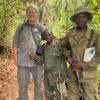

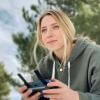




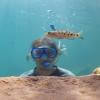










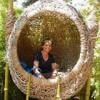


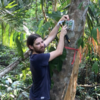
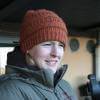
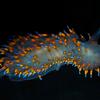







21 May 2024 10:53am
There is a South African company Avior labs that successfully does drone surveys on game farms using AI to count and identify wildlife. The trick is to use both infra-red and optical camera simultaneously getting the AI to use the infra-red to narrow down where there are animals and then only use the optical camera feed of those areas to identify the species. Technically it is a lot trickier than it sounds but they have an effective AI workflow.
As to altitude for most countries there are restrictions to 120m above ground level for drone flights and to cover a significant area you need a relatively fast and really long endurance drone given that it has to fly survey grids. So using a 50mm lens on a 24.1megapixels DSLR camera your field of view would be 90 meters and your resolution would be 1.5cm per pixel. You would want to fly grids with overlap so you would cover 50m in a single transect. So to survey an area 10X10km you would need to fly 200 transects of 10 km i.e. 2000km, if you were flying at 135km an hour that would be 14 hours of flying if you took no time to turn around.
I am just pointing out the limitations that I have come across - nothing one cannot address but one has to take into account.
I have come to the conclusion that drones have not yet met their promise in conservation because we seriously underestimate the endurance needed for drones to become a daily conservation tool, doing game counts, surveying for vegetation changes, looking for snares.
I am trying to motivate for the investment in developing a long-endurance hydrogen fuel cell conservation drone with an endurance of 10 hours, speed of 135km and hour and the ability to run on green hydrogen generated on site through hydrolysis of water using solar power.